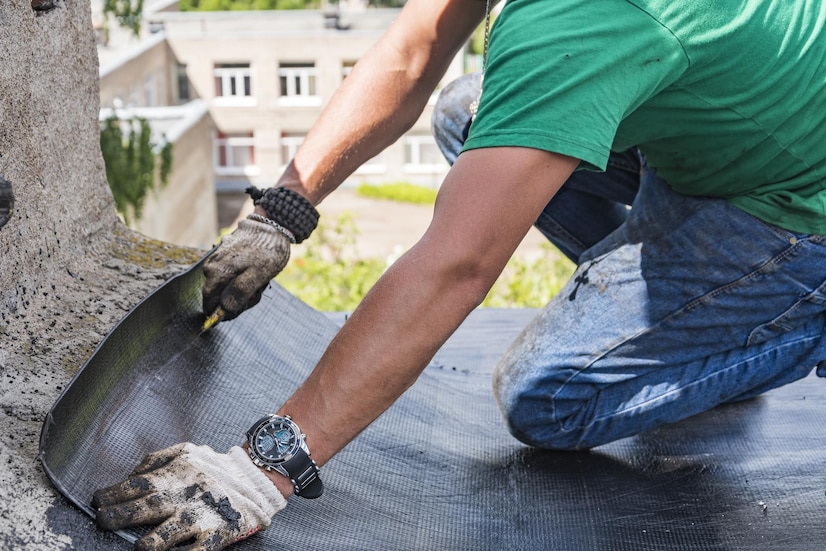What to Do if Waterproofing Fails?
Waterproofing is one of the most important aspects of construction; it protects buildings against water intrusion, preventing moisture from damaging walls, floors, ceilings, windows, doors, roofs, foundations, and electrical systems. However, waterproofing is often overlooked during construction because it does not directly affect how well a building functions. In fact, waterproofing accounts for just 2-3 percent of a building’s total cost. But when waterproofing fails, the consequences are significant.
Common Causes of Waterproofing Failure
Waterproofing failures can happen for many reasons. Poor installation techniques, improper materials used, or even a lack of maintenance can lead to leaks. If you notice water coming into your home, it’s important to identify the source of the leak and fix it immediately with The Grout Guy leaking shower repairs professional. Otherwise, the damage could spread throughout your house. Here are some common causes of waterproofing failure.
Improper Installation Techniques
The most common cause of waterproofing failure is improper installation techniques. This includes installing the wrong type of material or using inadequate adhesives. These mistakes often occur because builders do not understand the importance of proper waterproofing or how to install waterproofing correctly. In addition, many homeowners don’t realize that waterproofing must be installed properly to ensure long-term protection against moisture intrusion.
Incorrect Materials Used
Another common cause of waterproofing problems is choosing the wrong types of materials. For example, concrete is one of the best choices for waterproofing exterior walls, but it requires special attention during construction. Other materials such as tarps, plastic sheeting, and fiberglass insulation can also fail due to improper installation methods.
Membrane Not Part Of Entire System
A third common cause of waterproofing failures is using membranes that aren’t part of an entire system. Some people think that a waterproofing membrane is enough to keep water out of a structure. However, this isn’t true. A waterproofing membrane needs to be combined with other components like flashing, caulking, and drainage systems to prevent water infiltration.
Issues from Higher Levels
Multilevel buildings are becoming increasingly popular because they offer great views and space efficiency. But there are some drawbacks to having multiple stories. One of those is waterproofing. Multilevel structures often require special waterproofing materials and techniques, especially on the uppermost level. This is due to the fact that water tends to pool on flat roofs, while rainwater pools on sloped ones.
Flat roofs, in particular, are prone to collecting excess rainwater that can leak into walls and ceilings. When this happens, you could end up dealing with mold growth and structural damage.
Poor workmanship on higher levels can lead to waterproofing failures. For example, faulty plumbing can prevent proper drainage and allow water to build up inside walls and ceilings.
Poor Waterproofing Work
Poor waterproofing work can lead to leakage problems. For example, leaking rainwater can damage a building, causing rot and mold growth, and even lead to structural collapse. A common cause of water penetration into buildings is improper waterproofing techniques. Waterproofing membranes are often installed incorrectly, resulting in leaks.
In addition, waterproofing membranes must be properly prepared before being applied. This step ensures that the membrane adheres well to the surface it covers. If the membrane does not adhere well, it may separate from the wall over time.
Lack of Maintenance
Waterproofing is important because it helps prevent moisture build-up inside walls and ceilings. This reduces the risk of mould growth, rot, and structural failure. If left unchecked, water can cause serious damage over time.
According to the Building Services Association of Australia, about one-third of building owners don’t know how often they should check their external waterproofing. Some people even think it’s enough to simply paint the outside once every few years. However, regular checks are essential to ensure that the waterproofing system is working properly.
If you notice signs of water intrusion, such as damp patches, damaged siding, or leaking pipes, immediately contact a professional waterproofer. They can identify the source of the leak and recommend appropriate solutions.
Wrong Choice of Waterproofing Membrane
The most common mistake builders make when choosing a waterproofing material is to focus solely on price. This is understandable because the cost of materials can vary widely depending on where you are located. However, there are many factors to consider, including durability, flexibility, resistance to UV rays, chemical resistance, and the ability to withstand root penetration.
Here are some key points to keep in mind when selecting a waterproofing solution:
- Choose a waterproofing membrane that provides long-term protection against water intrusion.
- Consider the type of climate and weather conditions you face. If you live in a coastal area, select a membrane that is designed to resist saltwater. If you live in arid areas, look for a membrane that resists moisture and protects against wind-driven rain.
- Select a membrane that allows movement within the structure. This is especially true if you plan to add solar panels, mechanical equipment, or other devices that require access to interior spaces.
- Be aware of the impact that the membrane will have on the building envelope. Some membranes are rigid and inflexible, while others are very pliable and easy to work with.
- Look closely at the warranty period of the product. Many products come with warranties ranging from 10 to 20 years.
High Surface Damages
After applying the waterproofing, some men do not know how to protect the waterproofing surface. If there are many holes on the surface, the waterproofing effect will decrease. So, we must pay attention to the waterproofing surface. We must take care of the waterproofing surface, especially when working outdoors.
We must use special tools to dig out the waterproofing surface, such as a hammer, claw, chisel, etc. To avoid damaging the waterproofing surface, we must make sure that the waterproofing surface is protected.
When installing the waterproofing material, we must drill a hole at least 2 cm deep. If there is no waterproofing material layer, we must install waterproofing material to cover the waterproofing surface.
If there is too much moisture on the surface, we must dry the surface quickly. Otherwise, the waterproofing surface will crack.
In addition, we must check whether the waterproofing surface is damaged. If there is damage, we must repair it immediately. Waterproofing materials cannot be used again after being damaged.


















